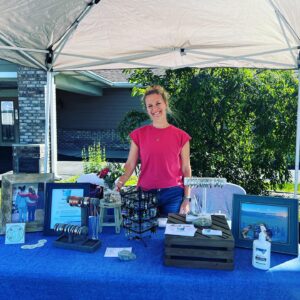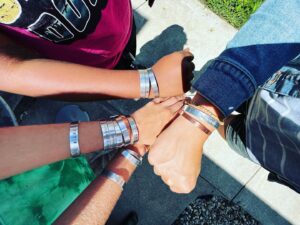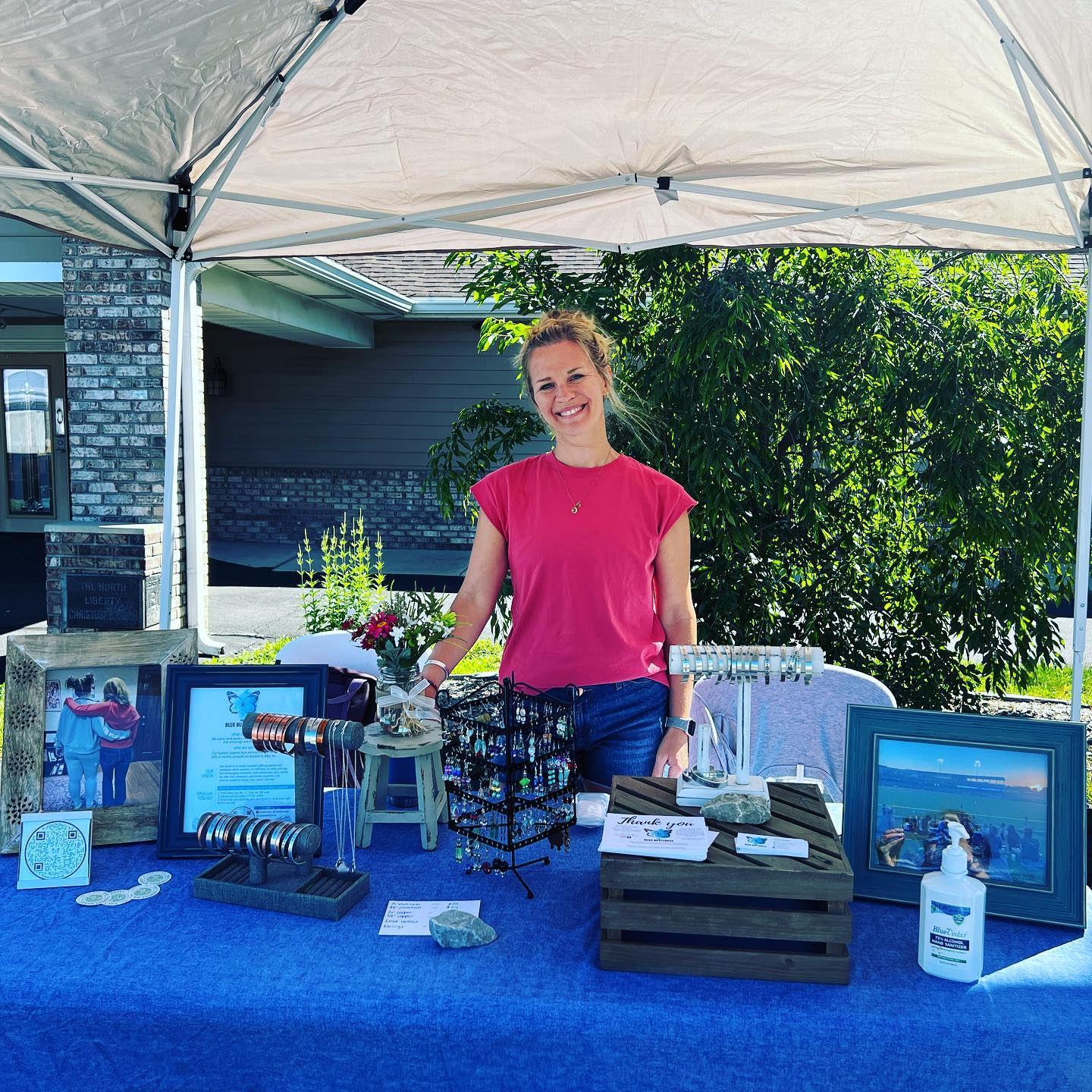Blue Butterfly Helps to Cultivate Relationships and Hope for Human Trafficking Survivors
Writer / Christy Heitger-Ewing
Photography Provided
The first lesson people should learn about human trafficking is that it doesn’t simply involve women in chains locked in a basement. They are saddled with psychological chains, and the process starts with grooming by either a family member or someone outside the home. If a child has an unstable home life, they are going to look for love elsewhere. If an older person takes an interest in them and makes them feel like part of a group, they feed off of that. Before they know it, they’re in too deep.
someone outside the home. If a child has an unstable home life, they are going to look for love elsewhere. If an older person takes an interest in them and makes them feel like part of a group, they feed off of that. Before they know it, they’re in too deep.
“If you throw a frog in a pot of boiling water, it’ll jump right back out, but if you put it in lukewarm water and slowly crank up the heat, it’ll be dead before it realizes it needs to get out,” says Jamie Hergott, who began learning about human trafficking more than 15 years ago. “That’s how it feels for these girls. Once they realize what’s happening, it’s too late.”
“To the outside world, these are troubled girls who tend to get written off, but once you spend time with them, you realize that you’d be that way too, if you’d gone through what they did,” Hergott continues. Plus there’s generational trauma, and as a result these girls often don’t know any different. Imagine if someone told you that everything you’ve learned growing up is totally wrong. That would be devastating and disconcerting. Some girls are in love with their trafficker because he’s the only man who’s ever taken care of her.
“Once those bonds are built it’s very difficult to walk away,” Hergott says. “To us it’s obvious what healthy love looks like, but not to them.”
When Hergott became educated about human trafficking, she participated in fundraisers with a friend who was leading a group of people dedicated to supporting nonprofits that worked with survivors. Still, she felt compelled to do more. She got involved with Allies, Inc., a nonprofit that empowers survivors of trafficking and sexual exploitation through mentorship and family support.
“We lean into the idea that trauma that happened through relationship must be healed through relationship,” says Hergott, who became a mentor for the program four years ago. Every mentor goes through trauma training to learn what trauma does to the body and the brain. Mentors are trained to walk with females aged 12 to 24 for at least a year, to help them navigate their new life and make positive choices going forward.
 “We aren’t their therapist or case manager,” Hergott says. “We show them what real friendship looks like. That may be a walk in the park, roller skating or just doing homework.”
“We aren’t their therapist or case manager,” Hergott says. “We show them what real friendship looks like. That may be a walk in the park, roller skating or just doing homework.”
After two years of mentoring, Hergott joined the Allies staff as a mentor coach, where she supports five mentor-mentee matches, checking in on her mentors and helping them when they have questions or concerns.
Allies recently offered a job training program for which they partnered with local businesses to give mentees real-life job experience. Although businesses mean well, it can be tricky for those who haven’t had trauma training to have the grace and patience for these girls who struggle with triggers, and make sense of different worldviews. For example, a mentee may become agitated if a man is in close proximity to them. Therefore, Hergott decided to create her own business, which will hopefully one day be staffed with trauma-trained managers and hire survivors as staff members.
In November of 2021, Hergott launched Blue Butterfly, which makes and sells affordable jewelry such as earrings and custom-stamped bracelets and necklaces. Part of the proceeds go toward supporting local anti-trafficking efforts at Allies, Inc. The female survivors also get a cut of the sales, and periodically have opportunities to work by making jewelry. Hergott sells their merchandise at various farmers markets and festivals. Selling their own jewelry creations has boosted girls’ self-esteem.
“One of them told me that [making jewelry through Blue Butterfly] is the safest place in her life because she feels like she can be herself,” says Hergott, who chose the name Blue Butterfly to honor one of her mentees who loves the color blue and lost her mom when she was 3 years old. Whenever she sees a butterfly, it gives her hope that she can keep going.
“When things don’t go her way, she picks herself up and tries something new,” Hergott says. “She has a lot of grit. I wanted to name it after her because my relationship with her has taught me so much about people.”
Hergott notes that once you learn about trauma, you approach people differently.
“You have a lot more compassion, even for those who are mean and rude,” Hergott says. “Instead of asking, ‘Why are you that way?’ you ask, ‘Are you OK?’”
way?’ you ask, ‘Are you OK?’”
For more information or to shop at Blue Butterfly, visit bluebutterflystore.com.




